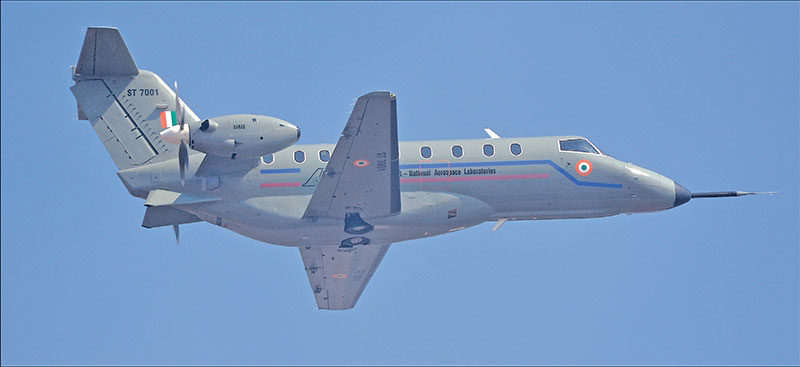There is a crying need for Indian regional transport aircraft
Rohan Ramesh | Bengaluru
Last year, International Aviation Transport Association (IATA) predicted that China will be the biggest aviation market in the world by 2024, with the US in the second place and India third. The 20-year forecast by IATA sees an east-ward shift of the market, with China and India driving the world aviation market. With the world population projections to be close to 9 billion by 2037, IATA’s passenger projection for that year is placed at 8.2 billion. In other words, virtually every person in the world would undertake an air journey by that year.

That astounding projection makes air travel virtually as common as road or rail travel in the long-distance travel segment. Airbus forecasts a passenger and cargo aircraft demand of 37,400 aircraft by 2037, while Boeing pitches the demand at around 42,000 aircraft.
With the demand for civilian aircraft increasing, the world aviation industry is likely to see a massive surge in production. And with costs of civilian aircraft production seeing a cosmic jump, nations like India will have to cough up billions of dollars to acquire them.
India, incidentally, is the only emerging power which does not produce its own civilian aircraft. In fact, it is the only country in the BRICS grouping that is not a civilian aircraft producer.
Poised to become the third biggest market in 20 years, India will be the biggest civilian aircraft importer in the world, spending possibly a hundred billion dollars, which could produce millions of jobs within the country.
For decades, India has been a net importer of aircraft, both military and civil. And that is shocking, considering that in Asia, only India had an aircraft production facility in Hindustan Aeronautics Limited (HAL), outside Japan.
But considering India’s size and complexities of air travel demand, India would need more Regional Transport Aircraft (RTA), whose development and production would be within the country’s reach. The standard capacitation for regional transport aircraft according to international norms are sub-20-seaters, 30-seaters and 50-70 seaters. These are short-haul passenger aircraft that operate in the 300-500 km range, which can connect unserved and underserved Tier II cities as envisaged in the government’s ambitious UDAN (Ude Desh Ka Aam Nagarik) programme which seeks to make air travel affordable to all.
Aware of the need, last year, the government proposed a Special Purpose Vehicle (SPV) with a funding of Rs 10,000 crores, with a mandate to produce an RTA under the ‘Make in India’ initiative. But the programme has not found traction.
The idea of an Indian RTA is not new. In 2007, National Aerospace Laboratories (NAL) and HAL decided to join hands to design and manufacture a civil regional aircraft known as the Regional Transport Airliner. The aircraft was envisaged to offer 25 per cent lesser acquisition costs, 25 per cent lesser operating costs and 50 per cent lesser maintenance costs than current turboprop regional aircraft.
First announced by former Prime Minister H.D. Deve Gowda in 1996, the Regional Transport Airliner or RTA-70 has not received the push it needed. Not until now. According to a 20 November 2018 report in The Statesman, “A Special Purpose Vehicle (SPV) is likely to be set up to give shape to the government’s dream of manufacturing its own regional transport aircraft for civilian use. An inter-ministerial task force has already been set up which is studying whether manufacturing can be done. The government has also set up a Special Group that is studying all the regional planes that are registered in India.”
The same report quoted minister of state for civil aviation Jayant Sinha as saying that ‘A special group has been initiated to study regional transport planes’. If this becomes a reality, India will enter into the exclusive club of countries that can manufacture aircraft. The club includes China, US and France. China, according to reports, has also begun exporting aircraft. It has manufactured 168-seater COMAC C919 which is being compared to Airbus A320 Neo and Boeing 737 Max, both of which are latest versions.
Despite a setback in 2015 when HAL Chairman T. Suvarna Raju had mentioned that the regional transport aircraft project (RTA-70) had been abandoned, the project seemed to have been given impetus again. The former HAL Chairman had blamed the NAL for the programme’s premature demise.
You must be logged in to view this content.

